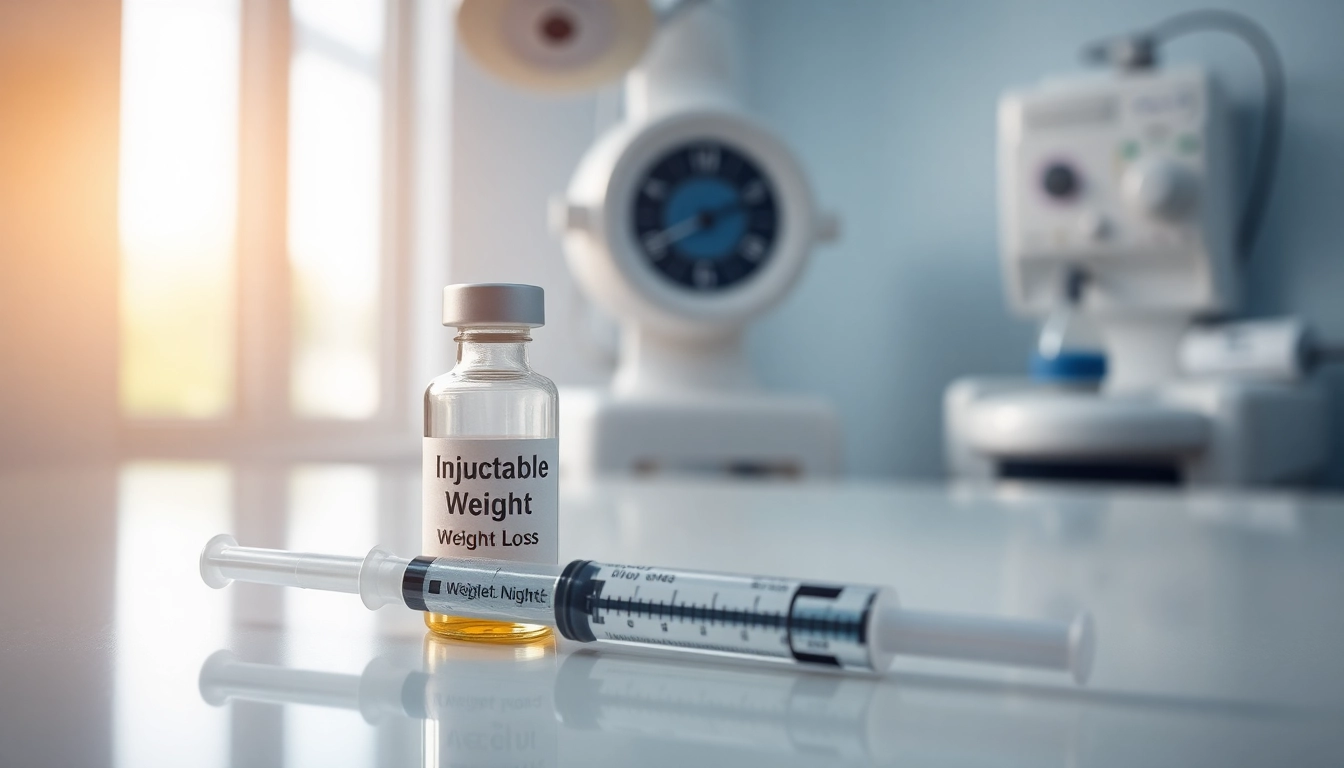
What is Injectable Weight Loss?
Defining Injectable Weight Loss
Injectable weight loss refers to the method of administering medications through injections to aid in weight management. Unlike traditional weight-loss approaches that often rely on diet and exercise alone, injectable treatments can offer a pharmacological aid to facilitate weight loss. These medications create physiological changes in the body, influencing appetite, satiety, and metabolic processes, providing patients with a potentially more effective tool in their weight-loss journey. By integrating an Injectable Weight Loss approach with lifestyle modifications, individuals can achieve sustainable weight management outcomes.
How Injectable Weight Loss Works
The fundamental mechanism of injectable weight loss medications often involves synthetic hormones that mimic the body’s natural processes. One of the most studied classes of these medications are GLP-1 receptor agonists, which include drugs like semaglutide. These medications work by activating the GLP-1 receptor, leading to reduced appetite and increased feelings of fullness after meals. As a result, individuals are less likely to overeat and may adhere to a reduced-calorie diet, thereby supporting weight loss efforts.
Additionally, some injectable treatments may affect how the body processes glucose and fats, enhancing metabolic rates and further assisting in weight loss. This multifaceted approach can lead to significant reductions in body weight when appropriately administered, monitored, and combined with dietary changes.
Benefits and Risks of Injectable Weight Loss
The benefits of injectable weight loss medications extend beyond mere weight reduction. Key advantages include:
- Increased satiety: Many injectable treatments effectively curb hunger, allowing patients to consume fewer calories without feeling deprived.
- Improved metabolic health: Weight loss can lead to enhancements in metabolic indicators such as insulin sensitivity, lipid profiles, and blood pressure.
- Accessibility: For individuals who have struggled with diet or oral medications, injections can provide an alternative method to achieve weight loss.
However, injectable weight loss also comes with potential risks. Common side effects may include nausea, vomiting, and gastrointestinal discomfort. Furthermore, it’s essential for patients to be aware that not all individuals will respond equally to injectable treatments, and long-term safety remains an area of active research.
Types of Injectable Weight Loss Treatments
Overview of Common Injectable Weight Loss Medications
Various types of injectable weight loss medications are currently available, each with unique mechanisms and indications. Below are some of the most common:
- Semaglutide: A GLP-1 receptor agonist, semaglutide has shown clinical effectiveness in reducing body weight by modulating hunger signals and promoting satiety.
- Liraglutide: Another GLP-1 receptor agonist, liraglutide works similarly to semaglutide but may be prescribed for different patient profiles or preferences.
- Tirzepatide: This newer medication targets multiple receptors, enhancing its potential effectiveness in weight management through a more robust modulation of appetite and metabolism.
Comparing Effectiveness of Different Injectable Weight Loss Options
When examining the effectiveness of various injectable weight loss options, studies show that treatments can lead to different levels of weight loss based on individual response and adherence to treatment protocols. For instance, research indicates that semaglutide can produce significant weight loss of 15% or more in individuals who adhere to its usage over time, while liraglutide typically results in slightly lower weight reductions.
However, individual results may vary significantly. It’s essential for prospective users to consult healthcare providers to determine the most suitable option tailored to their specific needs and health conditions.
Side Effects Associated with Injectable Weight Loss
While injectable weight loss medications can be effective, they are not without side effects. Commonly reported side effects include:
- Nausea
- Vomiting
- Gastrointestinal disturbances
- Injection site reactions
Patients may experience varying intensities of these side effects, with some individuals finding them to diminish over time as they adjust to the treatment. It is crucial for patients to discuss any adverse effects with healthcare providers to manage these situations appropriately.
Who is a Candidate for Injectable Weight Loss?
Eligibility Criteria for Injectable Weight Loss Treatments
Candidacy for injectable weight loss treatments typically includes individuals with a body mass index (BMI) over 30, or those with a BMI over 27 who also have comorbid conditions such as type 2 diabetes or hypertension. Additionally, candidates often have not achieved significant weight loss through traditional methods and are seeking medical interventions.
Health Considerations Before Starting Injectable Weight Loss
Before commencing treatment, it is vital for potential candidates to undergo comprehensive medical evaluations, including assessments of current health conditions, including metabolic and cardiovascular health. Some contraindications exist, particularly for individuals with a personal or family history of certain endocrine tumors or pancreatitis, which necessitates thorough medical history evaluations prior to initiating treatment.
Consulting Healthcare Professionals
Consultation with healthcare professionals is key to ensuring safe and effective weight management. A healthcare provider can guide patients through the selection process, helping them understand the potential benefits and risks associated with various injectable treatments. Additionally, ongoing monitoring during treatment is essential to adjust dosages and address side effects.
Integrating Injectable Weight Loss into a Healthy Lifestyle
Combining Injectable Weight Loss with Diet
Injectable weight loss medications are most effective when combined with a structured diet plan. Patients are encouraged to work with nutritionists to develop meal plans that emphasize whole foods, balance macronutrients, and reduce caloric intake without compromising nutrition. Integrating mindful eating practices can also enhance the treatment’s effectiveness.
Enhancing Results with Physical Activity
Physical activity is a crucial component of any weight management program. Regular exercise not only complements the effects of injectable weight loss treatments but can also improve overall health outcomes. A balanced regime combining cardiovascular activities, strength training, and flexibility exercises is recommended.
Long-term Maintenance after Injectable Weight Loss
Upon achieving weight loss goals, maintaining those results becomes crucial. Patients may need to continue behavioral modifications, including dietary changes and physical activity, along with potential ongoing management of injectable treatments. Support groups or continued counseling can also contribute positively to long-term success.
Future of Injectable Weight Loss Treatments
Recent Advances in Injectable Weight Loss Research
The field of injectable weight loss treatments is rapidly evolving, with ongoing research aimed at improving efficacy and minimizing side effects. Innovative compounds targeting different metabolic pathways are being investigated, promising enhanced weight-loss outcomes and safety profiles in the future.
Expectations for New Injectable Weight Loss Drugs
Future injectable medications may provide more comprehensive solutions, targeting appetite regulation, metabolism, and even cravings. Investigative therapies focusing on the microbiome’s role in weight management also show promise, potentially revolutionizing treatment paradigms.
Potential Trends in Injectable Weight Loss Management
As public awareness and acceptance of injectable weight loss therapies increase, significant trends towards personalized medicine are emerging. Tailored treatment plans based on genetic profiles, lifestyle factors, and individual health histories will likely dominate future approaches, enabling more effective and sustainable outcomes.








